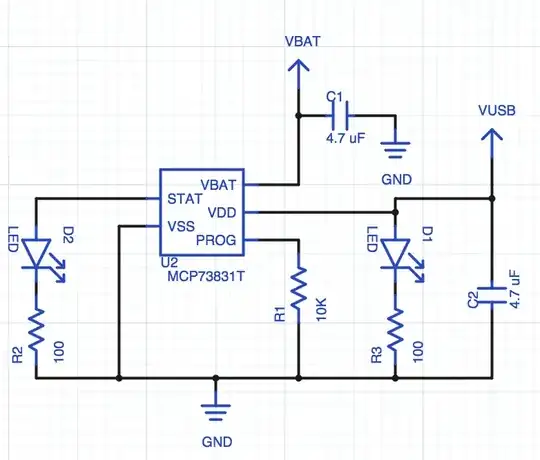I'm trying to charge a LiPo with MCP73831 with 2 LEDs for status. I have an amber LED D1 which is on when VUSB is getting power from the USB connector, which means that it's charging. And a green LED D2 that should also light up when the battery is fully charged.
I'm having no luck getting the green LED D2 to light up when the charge is complete. I can see that the USB draw drops to near zero, and after being plugged into USB power for hours, the green LED will never light up. It's clearly done charging and the battery output voltage measures 4.2V, which is expected for a fully charged single cell LiPo battery.
Interestingly, when I poked around with the multimeter I got the green LED to illuminate. When I measured the voltage between GND and VBAT the green LED turned on while the probes were in contact with the circuit. When I removed the multimeter probes, the green LED immediately turned off.
So two questions:
- Why doesn't the
STATpin outputHIGHwhen charging is complete as the datasheet claims it should? (which should light the green LEDD2) - Why does measuring the voltage between
GNDandVBATcause the STAT pin to outputHIGH? - Does the multimeter measuring between
GNDandVBATeffectively place a high Ohm resistor between the two? And if so, would that fix this? Why?

Links to relevant things: